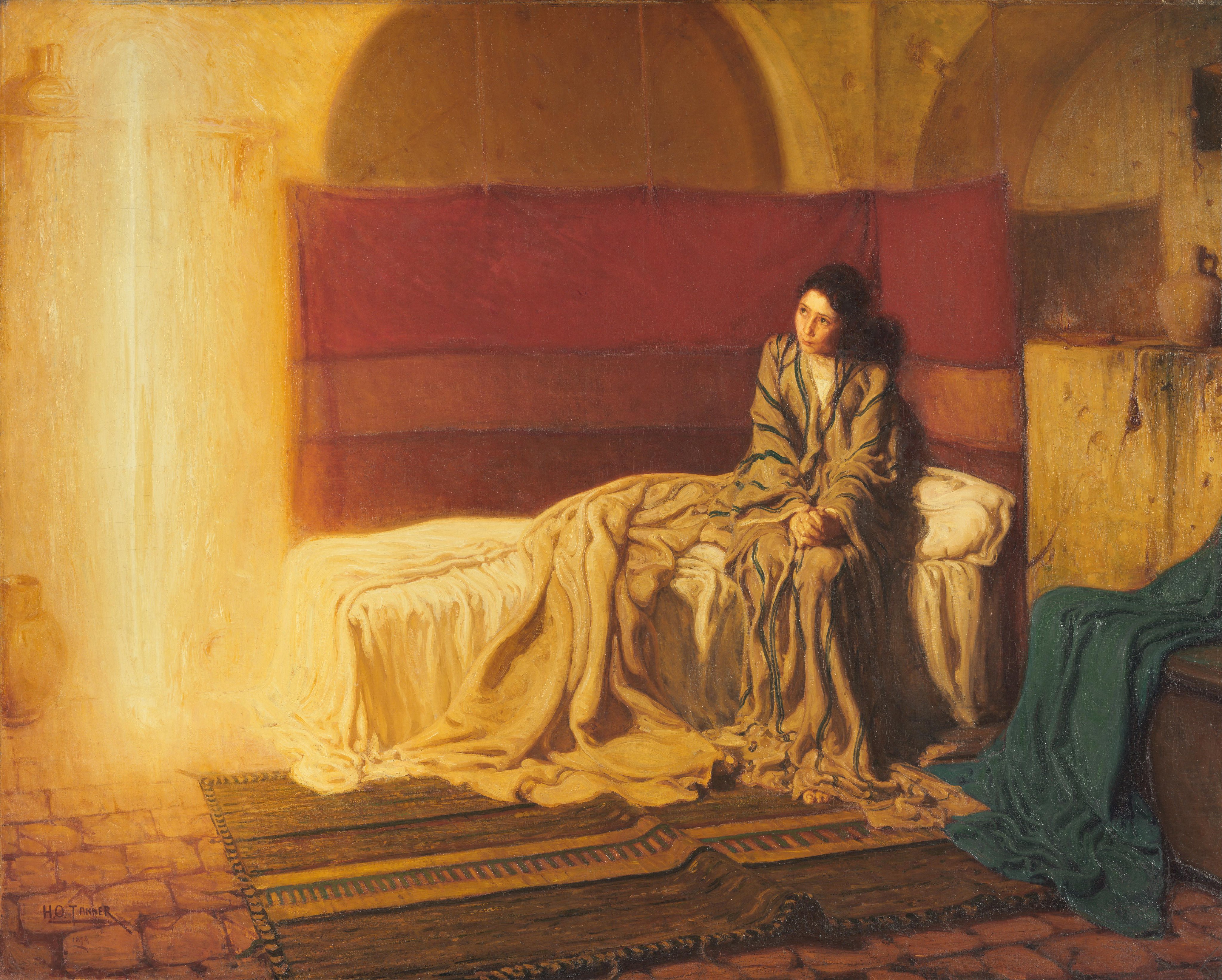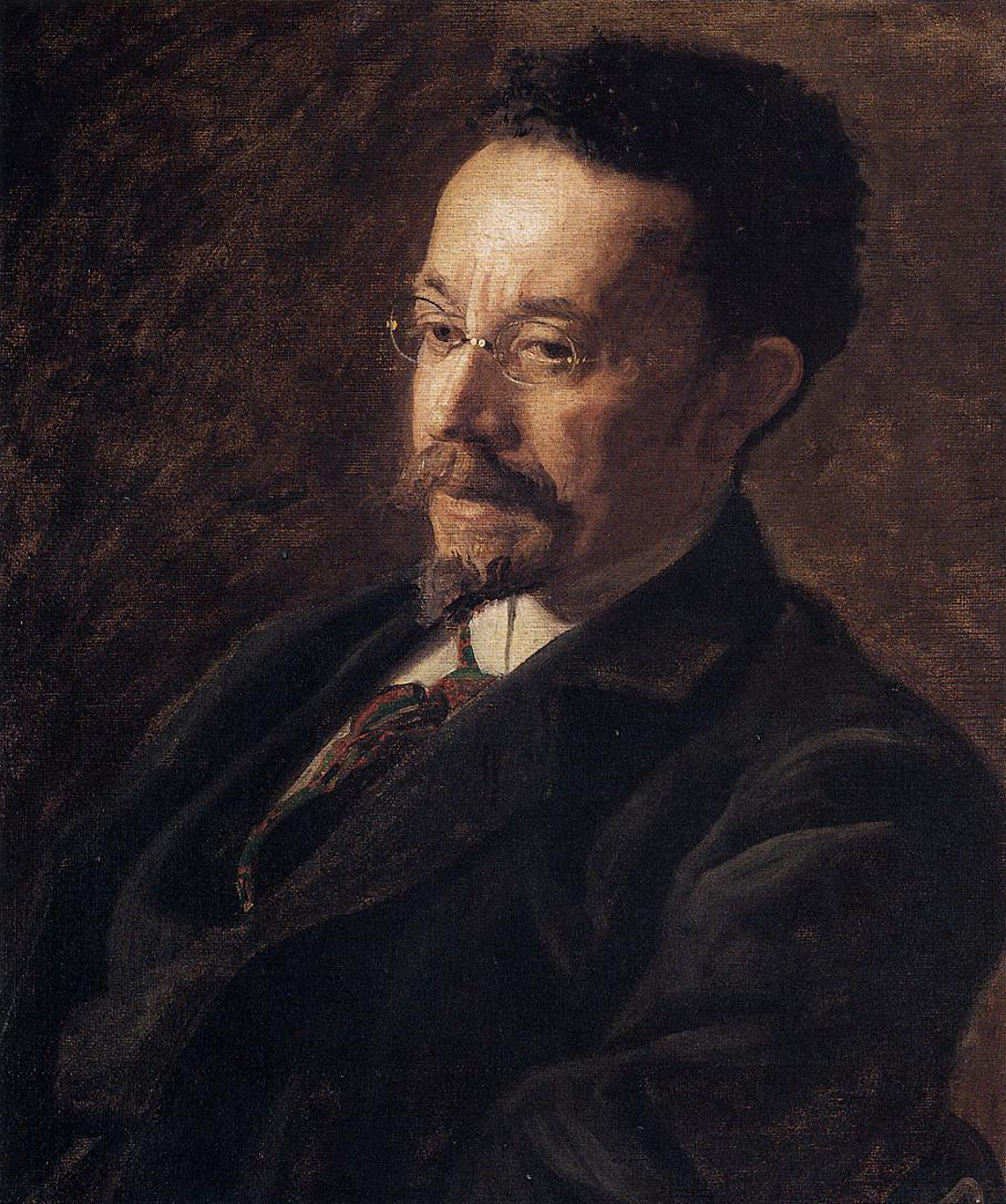Let's look at today's painting. We see a young girl dressed in humble, rumpled peasant robes, sitting on a disheveled bed in a simple room with a cobblestone floor. Her expression conveys a mix of fear and awe. Who is she, and what is happening? The bright column of light to the left holds the answer. This painting is a striking reimagining of one of the oldest themes in European art: the Annunciation, where the angel Gabriel informs Mary that she will become the mother of Jesus. Unlike traditional depictions that present Mary in grand blue robes within a palace or cathedral, listening serenely to an angel adorned with wings and a halo, Tanner's approach is entirely different.
Tanner’s decision to make the scene so unconventional stemmed from his desire for realism. He painted this work shortly after returning from a transformative journey to the Holy Land in 1897. While there, he sketched ordinary Jewish people in the landscapes where Jesus lived, immersing himself in their culture, environment, and light. This experience inspired him to create a depiction that felt authentic and grounded.
For Tanner, as for many African American artists and creators, Bible stories often served as metaphors for liberation from slavery and discrimination. This perspective adds depth to The Annunciation, a painting celebrated as a "brilliant masterpiece" when first exhibited in America.
With this amazing painting, we continue our celebrations of Black History Month!
P.S. If you want to know more about this inspiring painter, here's the story of Henry Ossawa Tanner—the first African American artist to become internationally successful.


 Henry Ossawa Tanner
Henry Ossawa Tanner